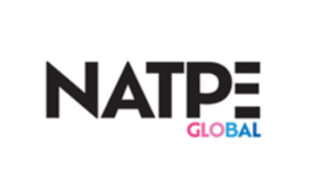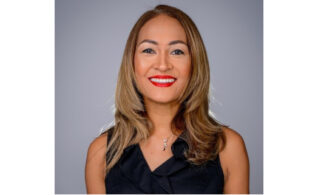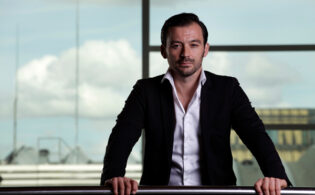Kelly Day, the president of streaming and COO at ViacomCBS Networks International, tells World Screen about how the company is navigating the global direct-to-consumer landscape.
The already ultra-competitive SVOD landscape has a new entrant this spring: Paramount+. ViacomCBS’s new service—which rebranded from CBS All Access in the U.S. in March—spans the breadth of the company’s content engines, including CBS, MTV, Nickelodeon, Paramount Pictures and the Smithsonian Channel. Already available in Canada, Latin America and the Nordic markets, with the Australian arrival due later this year, Paramount+ is just one pillar in ViacomCBS’s global streaming strategy. The company has also been building the presence of its AVOD service, Pluto TV, which has fared well in Latin America since its arrival there last year.
 WS: What was the thinking behind the rebrand of CBS All Access in the U.S. and branding the international service as Paramount+?
WS: What was the thinking behind the rebrand of CBS All Access in the U.S. and branding the international service as Paramount+?
DAY: We did a lot of research around an umbrella brand as we were bringing Viacom and CBS together and thinking about how to incorporate the Paramount studio titles, which included testing outside the U.S. in the key markets where we knew we would eventually want to go with the service. We always knew that the Paramount brand was very strong. Paramount is a 100-year-old iconic studio. But it was wonderful to see how incredibly strong the consumer research was in pretty much every market with regard to the Paramount brand; 91 percent brand awareness, 96 percent favorable recognition. These are exceptionally strong statistics. That gave us confidence as we started to think about rolling out in various markets, particularly non-English-language markets. The Paramount [name], the mountain with the stars, that iconic branding, really did cut through and the consumer research completely supported that choice in brand.
WS: Outline the international rollout strategy for Paramount+. How did you determine the initial batch of markets for this year?
DAY: We already have some presence in all of the international markets in phase one. We have CBS All Access and 10 All Access in Canada and Australia, respectively. We had what you might consider a light version of Paramount+ in Latin America. The Nordics was one of the first markets where we introduced the Paramount+ brand back in 2017. It’s been a very popular service through our MVPD partners in the Nordics. So we already had some experience and a bit of a footprint in those markets as we thought about bringing a bigger super-service to drive direct-to-consumer subscribers and grow the Paramount+ brand. We have an ambitious rollout plan to launch in more markets relatively quickly over the next couple of years. When determining our rollout strategy, we look at everything from the strength and consumer adoption [of SVOD] to content availabilities and content rights situations to MVPD and telco partner relationships. We feel great about the first four markets where we are launching, given we already have experience in those markets and have strong content and distribution partnerships.
WS: Let’s talk about the AVOD proposition too. How is the Pluto TV expansion progressing internationally?
DAY: Pluto TV has been phenomenal! When we acquired Pluto TV a couple of years ago, it had just launched in the U.K. and Germany, so it had a little bit of experience launching in some international markets. Last April, we rolled out in Latin America. At the end of last year, we launched in Brazil and Spain. This year already, we’ve launched in France and soon will launch in Italy. Honestly, the numbers speak for themselves. We are up to 13 million monthly active users internationally as of the end of last year. We see that number continuing to grow exponentially. The rate of growth has been exceeding our expectations. We expect that growth trajectory to continue. For consumers, it’s a no-brainer. We have great distribution and it’s a great product. It’s a wonderful lean-back experience—you can put it on and get immersed into any number of different channels. In all the markets we have a pretty great selection of local channels, which have proven to be very popular. In LatAm, we have lots of great local channels and people on the ground looking for content, talking to local content partners and curating and putting those local channels together. As we go into 2022, we will have more markets coming. Pluto TV creates a ton of value for a price-conscious consumer, advertisers like it, and it continues to take off.
WS: Tell us about the importance of having a dual AVOD/SVOD strategy as you navigate the complexities of the global D2C landscape.
DAY: We certainly have taken advantage of the fact that we are one of a handful of companies that can have a flexible market approach. When we think about our approach to streaming, we are looking at it market-by-market and making decisions around things like our content pipeline, the dynamics within a market in terms of consumer adoption of SVOD, the health and strength of the ad market on the AVOD side and thinking about whether it’s a strong opportunity with regard to AVOD. And then making choices, including: Do we want to launch Paramount+ first or Pluto TV first? Or in the case of Latin America, for example, have both products in the market. And when we have both products in the market, you have what Tom [Ryan, president and CEO of streaming at ViacomCBS] described on investor day as this super-funnel idea. I would say the super funnel goes beyond just Pluto TV into SVOD, but incorporates the entire scope of ViacomCBS assets. In Latin America, we own Telefe, which is the number one broadcaster in Argentina. We have pay-TV assets all across the region. We have a huge social media presence and footprint with digital channels. We have this incredibly fast-growing Pluto TV service. And now we’re scaling up our Paramount+ offering. All of these things work together. You’re going to see all of our linear channels, all of our social feeds, Pluto pop-up channels, the entire weight of ViacomCBS getting behind driving subscribers to SVOD. That’s the core of the strategy and why we think we have a good approach.
WS: What role will ViacomCBS International Studios play as Paramount+ deepens its presence in markets with locally resonant content?
DAY: We believe that local and original content are key to the selling proposition of Paramount+. Consumers love the big Showtime series, the big Paramount+ series and the Paramount pay-one movies. That is the core of our offering—it’s critical to the consumer value proposition. Those types of shows are recognized worldwide. What differentiates us and is a big driver of customer acquisition is local content. People want to see the faces, voices and stories that reflect their local culture and storytelling. We’ve been working with phenomenal producers, writers, directors and on-screen talent to try to put together a very strong slate of local originals. We’re super excited about the originals we announced at investor day, especially the new series from Juan José Campanella [Los Enviados]. But that’s just the beginning. We want to keep investing in other local markets as well. We announced Last King of the Cross in Australia, and we are going to greenlight some additional shows there, as well as one or two that we’ve greenlit in the Nordics, including Ib the Dog. We view that not only as a driver of local subscribers, but we also see that content traveling globally. So when we’re greenlighting a show, for example, in Latin America, yes, it’s going to be a big tentpole promotable in the region and it’s going to drive subscriber acquisition, but we also assume that it’s going to be able to travel everywhere. We look at scripts and stories that we think are going to be able to travel. If you look at the investments that all the big streamers are making in local content, it’s with the idea that local content appeals to global audiences now. People like seeing stories from all over. We think it’s an important part of the offering.
WS: Tell us about the distribution strategy, be it with existing MVPD partners, device manufacturers or telcos.
DAY: It’s all of the above. We believe in having the broadest distribution strategy possible. The service will be available on all the big global platform partners—web, mobile, iOS, Android, Amazon Channels, Apple TV Channels. But one of the big differentiators for our strategy is our local platform and distribution partners. ViacomCBS has a long history of deep relationships with MVPD and telco partners. When we launched in Latin America, we did so with over 50 local partners, including Roku, Claro Video, Mercado Libre, izzi, Megacable, Totalplay, Claro Brasil, Vivo, Oi, InComm and DISH, in addition to all the big global platform partners. So you can find us on your local set-top box, on your mobile phone, some of your e-commerce partners. We’re being very expansive in our approach to distribution. We want to be everywhere; we want to have a product that appeals to people regardless of device or platform.
WS: How can you tap into the strengths of the ViacomCBS brands to maximize the awareness of Paramount+?
DAY: You’ll see the full weight of ViacomCBS behind Paramount+. Telefe will continue to support Paramount+ in Argentina, not only through things like sampling free episodes but also through talent integration and other integrations into news and some of our general entertainment programming. Also in Latin America, we launched a Pluto TV pop-up channel to coincide with the launch of Paramount+, which featured a sneak peek of what’s available on the premium service. In many markets, our pay-TV channels MTV, Comedy Central and Paramount Network will run roadblocks of Paramount+ programming. We’re putting all of the weight of all our assets, from linear to AVOD and more, behind supporting this launch and making it as successful as possible.
WS: How do you determine a pricing strategy for Paramount+? Will it be dependent on the market?
DAY: Our mantra is, we want to give consumers a premium content offering at a price point considerably lower than [our] competitors, making it essential for both consumers and distribution partners. We want to make this a service you have to have. For consumers, that equation [is based on] having a depth of library and the key titles that are the must-watch, combined with how much you have to pay for it. That is the value equation that consumers put together. Our service is going to be priced significantly below other streamers in the market. We will be offering a seven-day trial across our markets during a time when a lot of other streamers have discontinued their trial offerings. We’re trying to make it as easy as possible for consumers to choose Paramount+.
WS: Throughout 2020, we saw lots of restructures as media companies prepared to lean into streaming. Tell us about the approach you’ve taken to structuring your international streaming team at ViacomCBS.
DAY: Philosophically, our approach is global-local. As a streaming service launching a global brand on a global platform, we want to use the opportunity to have our domestic and international teams work together to make sure we have a [unified] approach with regard to platform, brand, technology and marketing. All of those strategies extend globally, so all of our markets can benefit from them. At the same time, we know there is tremendous value in local expertise, whether that’s programming people, local content acquisitions or taking advantage of our footprint and the relationships that our local teams have with distributors and operators. We’re trying to combine the best of both. We have a central team that focuses on those global opportunities and working closely with the U.S. team to make sure we’re completely aligned. And then, we have very strong local teams that are focused on distribution and local content strategies. Those teams come together to make a very powerful organization.
WS: Is there anything else you’d like to share with us about your streaming strategy?
DAY: We’re very excited about these first markets. That will put us in roughly 25 countries out of the gate. But this is just the beginning for us. We have a lot more markets coming, looking at other parts of Europe and Asia and assessing the right timing and execution strategy. There will be more to come.





